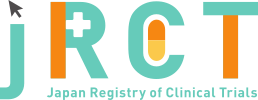臨床研究等提出・公開システム
|
May. 13, 2020 |
|
|
Mar. 15, 2024 |
|
|
jRCTs032200032 |
The use of wristband type continuous pulse measurement device with artificial intelligence for early detection of paroxysmal atrial fibrillation |
|
Wristband type continuous pulse measurement device with artificial intelligence for early detection of paroxysmal atrial fibrillation |
|
Mar. 16, 2021 |
|
80 |
|
The mean age of the patients was 65.8 years (SD: 13.4 years), and 57 (72.2%) were male. The breakdown of surgeries was 18 cases (22.8%) of single coronary artery bypass surgery, 57 cases (72.2%) of valvular surgery (including combined surgery), and 4 cases (5.1%) of others. The preoperative left ventricular ejection fraction by transthoracic echocardiography was 58.9% (SD: 8.8%), indicating a group of patients with good cardiac function. |
|
The pace of enrollment was almost as expected compared to the initially predicted pace. 79 patients completed the observation period as specified in the protocol. Only one patient had redness on the Apple Watch, and the study was stopped. |
|
In one case, the patient complained of itching after wearing the Apple Watch and discontinued the study. The symptoms disappeared quickly. Respiratory failure was observed in one patient, and pericardial effusion was observed in one patient, both of which were not causally related to wearing the Apple Watch but were due to the original disease. |
|
In this study, the percentage of concordance between conventional methods of diagnosing paroxysmal atrial fibrillation (central monitoring ECG, 12-lead ECG) and the diagnosis of paroxysmal atrial fibrillation with the wristband continuous pulse monitoring device was 62.5% (95%CI 29.0-96.1). The incidence of atrial fibrillation as a secondary outcome was 27 cases or 34.2% (95% CI 23.4-44.1). The area of the ROC curve for machine learning was 0.7952, sensitivity 63.12%, and specificity 86.05% for conventional diagnosis of AF. |
|
Pulse rate data was collected from 79 patients who underwent cardiac surgery by wearing an Apple Watch before and after the surgery. The data was used to formulate a diagnostic algorithm for atrial fibrillation using machine learning. The results showed that atrial fibrillation was diagnosed with an AUC of 0.7952 on the ROC curve, a sensitivity of 63.1%, and a specificity of 86.1%. |
|
Mar. 15, 2024 |
|
No |
|
none |
|
https://jrct.niph.go.jp/latest-detail/jRCTs032200032 |
Inui Tomohiko |
||
Chiba University Hospital |
||
1-8-1 Inohana, Chuo-ku, Chiba-shi, Chiba |
||
+81-43-222-7171 |
||
nuinui5762@yahoo.co.jp |
||
Hiraoka Daisuke |
||
Chiba University Hospital |
||
1-8-1 Inohana, Chuo-ku, Chiba-shi, Chiba |
||
+81-43-222-7171 |
||
axna4803@chiba-u.jp |
Complete |
May. 13, 2020 |
||
| 80 | ||
Interventional |
||
single arm study |
||
open(masking not used) |
||
uncontrolled control |
||
single assignment |
||
diagnostic purpose |
||
1, Cardiovascular disease requiring surgical intervention |
||
1, Patients with pacemaker |
||
| 20age old over | ||
| 90age old not | ||
Both |
||
Cardiovascular disease that needs surgery |
||
We wear an Apple watch series 4 on the patients to measure pulse and evaluate safety. |
||
Atrial fibrillation, wearable device, artificial intelligence |
||
We will investigate the accuracy of diagnosis of paroxysmal atrial fibrillation. |
||
1, Rate of paroxysmal atrial fibrillation after cardiovascular surgery |
||
| Advanced medicine research and development budget of Chiba University Hospital | |
| Not applicable |
| Chiba University Certified Clinical Research Review Board | |
| 1-8-1, Inohana, Chuo-ku, Chiba-City, Chiba, Japan, Chiba | |
+81-43-226-2616 |
|
| prc-jim@chiba-u.jp | |
| Approval | |
April. 22, 2020 |
none |
